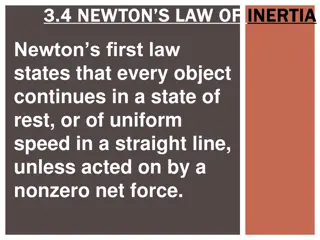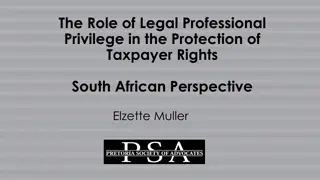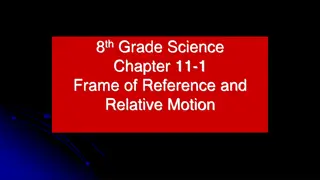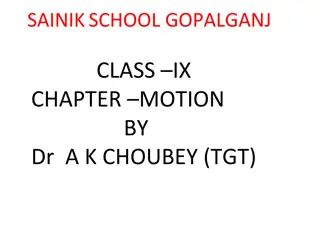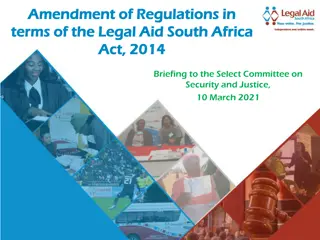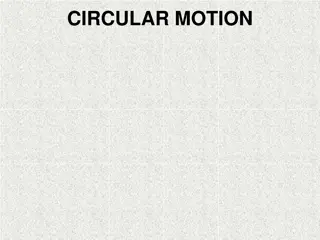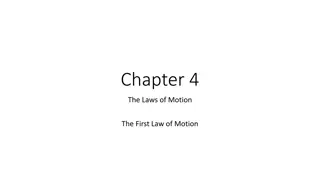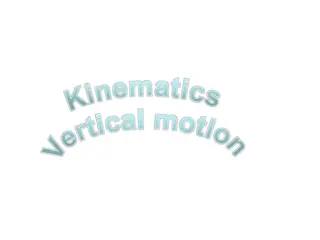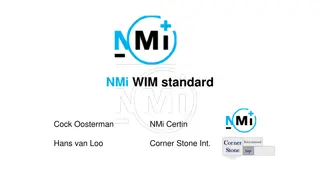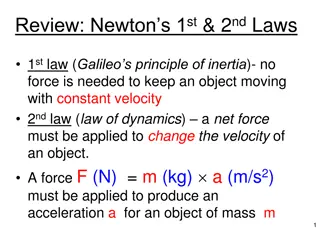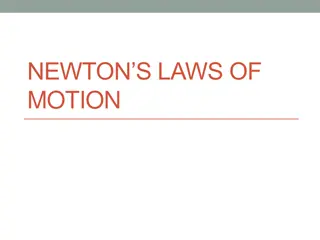Legal Framework for Weigh-In Motion in South Africa
The legal framework in South Africa regarding weigh-in motion involves various acts and guidelines that impact the weighing of vehicles, such as the Trade Metrology Act, Legal Metrology Act, and National Road Traffic Act. The laws govern the requirements for mass measuring, equipment specifications, and permissible maximum masses, with challenges in using weigh-in motion data for prosecution. The evolution from the Trade Metrology Act to the Legal Metrology Act has expanded the scope to include fine calculations and set rules for equipment approval, repair, and maintenance.
Download Presentation

Please find below an Image/Link to download the presentation.
The content on the website is provided AS IS for your information and personal use only. It may not be sold, licensed, or shared on other websites without obtaining consent from the author.If you encounter any issues during the download, it is possible that the publisher has removed the file from their server.
You are allowed to download the files provided on this website for personal or commercial use, subject to the condition that they are used lawfully. All files are the property of their respective owners.
The content on the website is provided AS IS for your information and personal use only. It may not be sold, licensed, or shared on other websites without obtaining consent from the author.
E N D
Presentation Transcript
WEIGH IN MOTION: THE LEGAL FRAMEWORK IN SOUTH AFRICA
Introduction The current legal position on the requirements for mass measuring. A quick history on the Trade Metrology Act, 77 of 1973 and the scope of the legislation. The provisions of the Legal Metrology Act, 9 of 2014 and how it impacts on the equipment and measurements used for weigh in motion. The requirements in the National Road Traffic Act, 93 of 1996 controlling overloading of vehicles. The presumptions on the accuracy of weigh equipment and the calculations for permissible maximum masses. The challenges to use weigh in motion measurements to prosecute operators and drivers criminally or administratively.
The Current Legal Position The following acts and guidelines impact on the weighing of vehicles - National Regulator for Compulsory Specifications Act, 2008 (NRCS) Legal Metrology Act, 2014 Measurement Units and Measurement Standards Act, 2006 - National Metrology Institute of South Africa (NMISA) Accreditation for Conformity and Good Laboratory Practice Act, 2006 (SANAS) National Road Traffic Act, 1996 o Regulations o Presumptions on accuracy o Consignors and Consignees TCSP guidelines
The Trade Metrology Act, 1973 Controlled weighing equipment before the legal metrology act Only applicable to trade use of equipment Specific exclusions for law enforcement equipment
The Legal Metrology Act, 2014 Replaced the Trade Metrology Act Extended the definition of trade to include fines Impact of amendment is that the act applies to all measurements relating to fine calculations since August 2014 Interim provisions for equipment that do not have technical regulations NRCS may set requirements for use of equipment until technical regulations are in place to control equipment Rules on o Type approval o Repair o Maintenance o Accuracy o Verification
National Road Traffic Act Load control legislation Load safety for tyres and vehicle specifications Protection of roads and bridges Control of operators, consignors and consignees
Calculation single axle with double wheels Tyres Reg 238 22 12.5R = 3000kg 4 tyres x 3000 = 12 000kg Manufacturer s specs Reg 239 + 245 GA 10 000kg Road limit Reg 240 9 000kg Least of masses 9 000 kg 11
Calculation single axle with single wheels Tyres Reg 238 22 12.5R = 3000kg 2 tyres x 3000 = 6 000kg Manufacturer s specs Reg 239 + 245 GA 5 000kg Road limit Reg 240 8 000kg Least of masses 5 000kg 12
Vehicles and combinations Reg 236 and 237 Sum of axles and axle-units GVM or GCM P/D x 240 (400 tractor) 5 x actual mass of driving axle/s Bridge formula: (L) x 2100 + 18 000kg Proviso: 56 000kg
Combination Calculation Sum of axles and units 6 500kg + 18 000kg + 24 000 kg GCM P/D 310 x 240 5 x 18 000 kg o (under load - 7 000 kg x 5= 35 000 kg) o Bridge formula o 14.60 x 2100 + 18 000 kg Proviso not applicable = 48 500 kg = 72 000 kg = 74 400 kg = 90 000 kg = 48 600 kg = 56 000 kg Permissible Maximum Combination Mass = 48 500 kg
Tolerances Part 29 NPA Manual All vehicles are limited to a 2% tolerance or grace: o 56 000 kg Permissible Maximum Combination Mass (PMCM) o 30 000 kg PMCM o 10 000 kg PMVM o 2 500 kg PMVM - 57 120 kg - 30 600 kg - 10 200 kg - 2 550 kg Axles and axle-units are limited to a 5 % tolerance or grace: o 9 000 kg Permissible Maximum Axle Massload (PMAM) o 18 000 kg PMAUM(Permissible Maximum Axle-Unit Massload) o 24 000 kg PMAUM - 9 450 kg - 18 900 kg - 25 200 kg
CHARGES FOR CONSIGNORS/ CONSIGNEES Consignors/consignees responsible for offences and infringements for dispatching or receiving overloaded vehicles in terms of regulations 330A to D Consignors/consignees can be charged even if drivers and operators are charged
Presumptions on the accuracy of weigh equipment and the calculations
Presumptions Several presumptions relating to weighing of vehicles Sec 70 - Accuracy of mass measuring bridge Sec 71 Accuracy of GVM/GCM Reg 248 accuracy of axle and wheel mass load calculations Constitutional issues with presumptions Weigh in motion devices may pose a challenge
The challenges to use weigh in motion measurements
Challenges to introduce WIM Technical regulation must be developed in terms of the Legal Metrology Act by NRCS Accreditation in terms of SANAS Tolerance discussions required with NPA Various provisions cannot be controlled via WIM Consignor prosecutions will be a challenge Possible amendments to TCSP Guideline on weighing Consideration of amendments to the presumptions on accuracy of equipment
Contact details Alta Swanepoel Office Cell: +27 67 147 3247 Alta Cell: +27 83 601 8562 Email: altaswanepoel@mweb.co.za admin@altaswanepoel.co.za alta@altaswanepoel.co.za

 undefined
undefined












